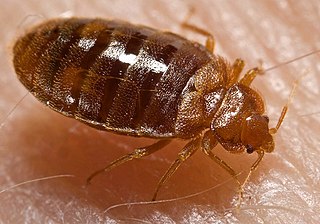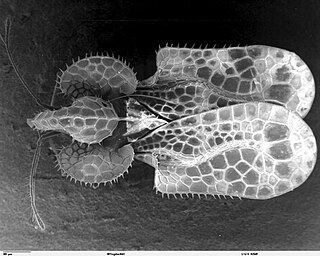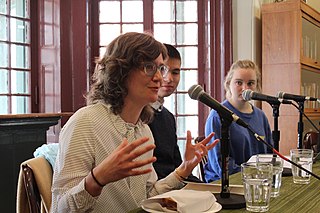Bed bugs are blood feeding insects that may infest human dwellings
Contents
Bed bug or bed bugs may also refer to:
Bed bugs are blood feeding insects that may infest human dwellings
Bed bug or bed bugs may also refer to:

Hemiptera is an order of insects, commonly called true bugs, comprising over 80,000 species within groups such as the cicadas, aphids, planthoppers, leafhoppers, assassin bugs, bed bugs, and shield bugs. They range in size from 1 mm (0.04 in) to around 15 cm (6 in), and share a common arrangement of piercing-sucking mouthparts. The name "true bugs" is often limited to the suborder Heteroptera.

Bed bugs are parasitic insects from the genus Cimex, who are micropredators that feed on blood, usually at night. Their bites can result in a number of health impacts, including skin rashes, psychological effects, and allergic symptoms. Bed bug bites may lead to skin changes ranging from small areas of redness to prominent blisters. Symptoms may take between minutes to days to appear and itchiness is generally present. Some individuals may feel tired or have a fever. Typically, uncovered areas of the body are affected. Their bites are not known to transmit any infectious disease. Complications may rarely include areas of dead skin or vasculitis.

The Cimicidae are a family of small parasitic bugs that feed exclusively on the blood of warm-blooded animals. They are called cimicids or, loosely, bed bugs, though the latter term properly refers to the most well-known member of the family, Cimex lectularius, the common bed bug and its tropical relation Cimex hemipterus. The family contains over 100 species. Cimicids appeared in the fossil record in the Cretaceous period. When bats evolved in the Eocene, Cimicids switched hosts and now feed mainly on bats or birds. Members of the group have colonised humans on three occasions.

Cimex lectularius is a species of Cimicidae. Its primary hosts are humans, and it is one of the world's major "nuisance pests".

The Cimicomorpha are an infraorder of insects in the order Hemiptera, the true bugs. The rostrum and other morphology of all members apparently is adapted to feeding on animals as their prey or hosts. Members include bed bugs, bat bugs, assassin bugs, and pirate bugs.
Bat bugs are parasitic blood-sucking insects that feed primarily on the blood of bats – their hosts. The name has been applied to members of the family Cimicidae and also to members of the family Polyctenidae. Bat bugs are closely related to bed bugs, and are so similar in appearance that they are often mistaken for bed bugs. Microscopic examination is needed to distinguish them. Bat bugs will also bite humans if given the opportunity. Bat bug species include:

The discipline of medical entomology, or public health entomology, and also veterinary entomology is focused upon insects and arthropods that impact human health. Veterinary entomology is included in this category, because many animal diseases can "jump species" and become a human health threat, for example, bovine encephalitis. Medical entomology also includes scientific research on the behavior, ecology, and epidemiology of arthropod disease vectors, and involves a tremendous outreach to the public, including local and state officials and other stake holders in the interest of public safety.

Traumatic insemination, also known as hypodermic insemination, is the mating practice in some species of invertebrates in which the male pierces the female's abdomen with his aedeagus and injects his sperm through the wound into her abdominal cavity (hemocoel). The sperm diffuses through the female's hemolymph, reaching the ovaries and resulting in fertilization.

Cimex is a genus of insects in the family Cimicidae. Cimex species are ectoparasites that typically feed on the blood of birds and mammals. Two species, Cimex lectularius and Cimex hemipterus, are known as bed bugs and frequently feed on humans, although other species may parasitize humans opportunistically. Species that primarily parasitize bats are known as bat bugs.

Forensic entomology has three sub-fields: urban, stored product and medico-criminal entomologies. This article focuses on medico-criminal entomology and how DNA is analyzed with various blood-feeding insects.
Infestation is the state of being invaded or overrun by pests or parasites. It can also refer to the actual organisms living on or within a host.
In the 10th edition of Systema Naturae, Carl Linnaeus classified the arthropods, including insects, arachnids and crustaceans, among his class "Insecta". True bugs and thrips were brought together under the name Hemiptera.
Bed bugs occur around the world. Rates of infestations in developed countries, while decreasing from the 1930s to the 1980s, have risen dramatically since the 1980s. Previous to this, they were common in the developing world but rare elsewhere. The increase in the developed world may have been caused by the growth of international travel, resistance to insecticides, and the use of new pest control methods that do not affect bed bugs.

Bed bugs, or Cimicidae, are small parasitic insects. The term usually refers to species that prefer to feed on human blood.

Fluralaner (INN) is a systemic insecticide and acaricide that is administered orally or topically. The U.S. Food and Drug Administration (FDA) approved it under the trade name Bravecto for flea treatment in dogs in May 2014 and Bravecto Plus as a topical treatment for cats in November 2019, with warnings about possible side effects in both species. The EU approved the drug in February 2014. Australia approved it for the treatment and prevention of ticks and fleas on dogs in January 2015. For treating mites in chickens, a solution for use in drinking water is available under the name Exzolt; it was introduced by the EU in 2017.
Bedbugs!!! is an American musical comedy about a mad-scientist exterminator named Carly who accidentally mutates New York City's bed bug population with her super-insecticide, which she created out of revenge for her mother's bedbug-related death. The rock musical, written by Paul Leschen (Music) and Fred Sauter, pays homage to 80s rock music, 80s films such as Gremlins and Ghostbusters, and features a side-plot about a Canadian pop singer called Dionne Salon. It opened off-Broadway at the Arclight Theatre on September 14, 2014 and closed on November 2, 2014. It has been compared to The Rocky Horror Show and Little Shop of Horrors.

Cimex hemipterus, known as the tropical bed bug, is a species of bed bugs within the family Cimicidae that primarily resides in tropical climates. However, it has been reported that this species can live in more temperate climates along with the closely related bed bug species C. lectularius.C. hemipterus is a hematophagous, obligate parasite of humans. This means that it requires blood meals from their human hosts in order to survive. When bitten, humans experience itchiness, wheals, and lesions around the affected areas on the skin. This species typically resides in human domiciles within cracks, crevices, or mattresses, and are more prevalent in developing countries. Like other bed bugs, C. hemipterus is primarily active during the night time.

Brooke Borel is a science journalist, scientist,and author.
Cavelerius saccharivorus, also known as the oriental chinch bug, is a small Asian true bug in the order Hemiptera and family Blissidae. It feeds by sucking the sap out of the stems of grasses and grass-like plants, including rice plants and sugarcane. Cavelerius saccharivorus is notorious for the damage it wrought to sugarcane plantations in Japan, China, and Taiwan in the early 20th century, from which it derives its Latin name saccharivorus, meaning "sugar-eater". Even today, the insect is still listed as one of the 100 most economically-devastating invasive species to Japan by the Ecological Society of Japan.

The 2023 Paris bedbug outbreak was a local infestation of bedbugs that took place in the French capital in the latter half of 2023. Reports of bedbug sightings began in rental and hotel accommodations in the summer of 2023, and escalated to public spaces, including movie theaters and transport systems, over the following months. The outbreak caused national upset and drew significant media attention, with both local and international actors calling on the French government for a more serious response to the situation. This outbreak occurred less than a year before the start of the 2024 Summer Olympics in Paris, raising concerns about the city's ability to safely host tourists and locals traveling for the occasion.